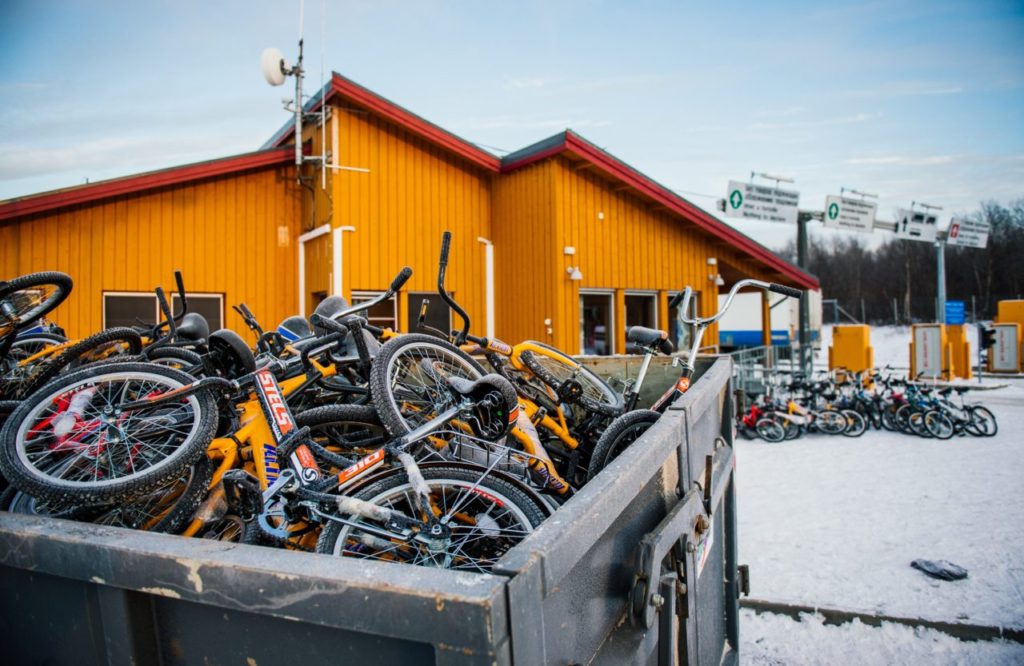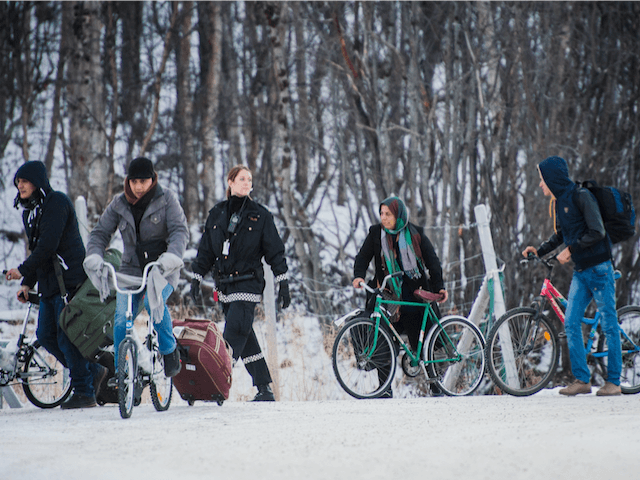(REUTERS) – Norway is putting up a steel fence at a remote Arctic border post with Russia after an influx of migrants last year, sparking an outcry from refugees’ rights groups and fears that cross- border ties with the former Cold War adversary will be harmed.
The government says a new gate and a fence, about 200 meters (660 feet) long and 3.5 meters high stretching from the Storskog border point, is needed to tighten security at a northern outpost of Europe’s passport-free Schengen zone.
For decades, the Nordics have enjoyed the image of being a reliable haven for asylum seekers.
But the erection of the fence, at a spot where 5,500 migrants mainly from Syria crossed into Norway last year, reflects a wider shift in public attitudes against refugees.
This is seen too in Sweden, Norway’s neighbour, which was once touted as a “humanitarian superpower”, but is setting up border controls this year and has toughened asylum rules.
Refugee groups and some opposition politicians say Norway’s fence will deter people fleeing persecution and is an unwelcome echo of the Cold War in a region where relations have generally flourished since the 1991 collapse of the Soviet Union.

Bikes used by refugees to cross the border from Russia to the Norwegian border crossing station at Storskog are pictured after they were thrown into a recycling container on November 12, 2015 near Kirkenes in northern Norway. (JONATHAN NACKSTRAND/AFP/Getty Images)
The fence will be erected in the coming weeks, before winter frosts set in, to make it harder to slip into Norway via a forest. Workers have so far done some preparatory work, clearing away old wooden barriers put up to control reindeer herds.
“The gate and the fence are responsible measures,” Deputy Justice Minister Ove Vanebo told Reuters, defending the move.
Both Moscow and Oslo have cracked down on the Arctic route, one that a few refugees found less risky than crossing the Mediterranean by boat, since last year’s inflow of migrants.
So far this year, no one has sought asylum via the northern frontier, according to the Norwegian Directorate of Immigration.
“I can’t see a need for a fence. There are too many fences going up in Europe today,” said Rune Rafaelsen, the mayor of the Soer-Varanger region which includes the border, told Reuters, pointing to barbed wire in nations such as Hungary.
Russia still maintains a fence the length of the 196 km frontier with NATO member Norway, sometimes several kilometres back from the dividing line. It has not complained about the Norwegian plans to build a fence.
But Rafaelsen, of the opposition Labour Party, said the region had made great progress in improving civilian ties since an Iron Curtain divided Norway from the Soviet Union and he, and others, saw the plans for a fence as a backward step.
“We’ve an obligation to be a country people can flee to,” said Linn Landro, of the Refugees Welcome group in Norway. “The fence sends a very negative signal, including to Russia because it says that ‘we don’t trust you’.”
Norwegians and Russians in the region can visit visa-free for short trips. About 250,000 people crossed the border last year, a decline from recent years but to be compared with just 5,000 a year in the Cold War.
Norway’s border Commissioner Roger Jakobsen said a weak rouble has made Norway more costly for Russians, road repairs have made crossings harder and ties have cooled after Norway and other Western nations imposed sanctions after Moscow annexed Ukraine’s Crimea region in 2014.
He doubted the fence would be a new deterrent and said there had been no complaints from Russia. “We shouldn’t make a storm in a teacup out of it,” he said.
(Reporting By Alister Doyle; Editing by Alistair Scrutton and Richard Balmforth)

COMMENTS
Please let us know if you're having issues with commenting.